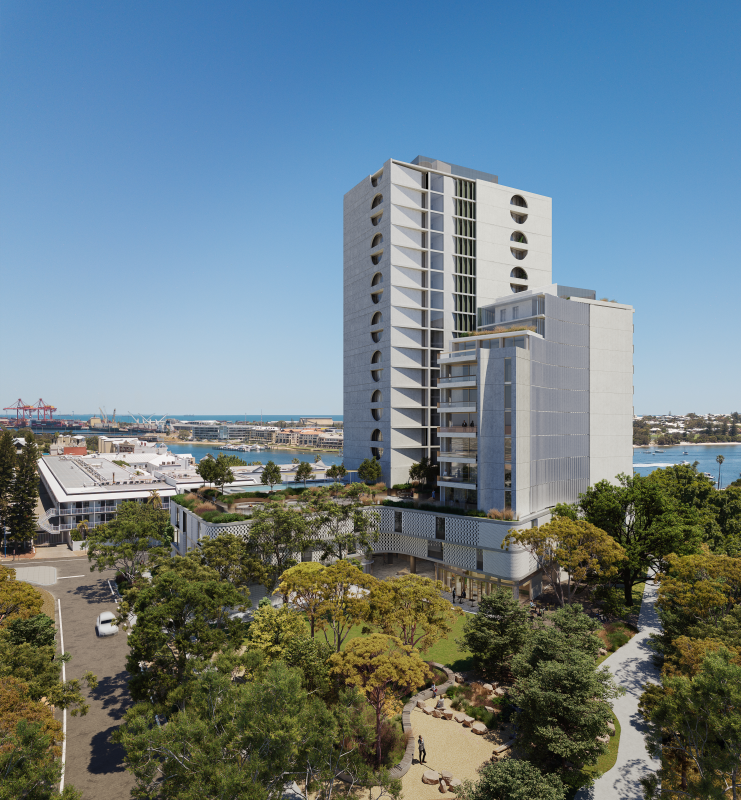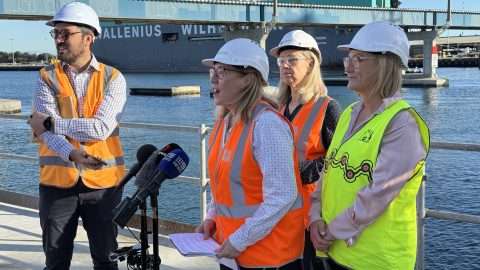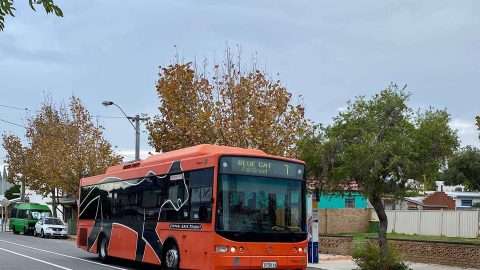Last Wednesday, 11 May 2023, the development application for the 19 storey, $85 million The Entrance apartment and commercial development at the corner of Canning Highway and Stirling Highway, East Fremantle, was approved by the Western Australian Planning Commission under the temporary, Part 17 of the Planning and Development Act 2005.

Artist impression of The Entrance
This approval, along with the WAPC’s approval on the same day, also under Part 17, of a $311 million expansion of St John of God Subiaco Hospital, brings the total value of 23 applications approved under Part 17, since July 2020, to more than $3.14 billion.
Without any apparent sense of irony, the WAPC refers to Part 17 as the ‘significant development pathway’.
The Entrance development, the WAPC said in an announcement made Friday, will ‘bring $85 million of investment to the Fremantle area and create up to 93 new apartments’.
In announcing The Entrance approval and the hospital expansion, the WAPC trumpeted the investment value and the number of jobs the 23 approved applications will supposedly create – 17,000.
The WAPC further announced that that these two developments ‘are two of seven State-significant applications worth more than $824 million expected to be considered by the WAPC over the next few months.’
As to the remaining five applications soon to come before it, it appears the WAPC’s approval of each is a fait accompli, having regard to what the WAPC added in its announcement: ‘The Commission is looking forward to considering the other five applications expected to come before it over the next few months and continuing to play a part in encouraging high-calibre significant developments around the state.’
From this it would appear that once an application has been considered appropriate for assessment under the significant development pathway as a ‘State-significant development’, it’s approval is virtually a given, in that the WAPC’s decision-making is driven primarily, not by whether a proposed development accords with the community planning principles of proper and orderly planning, but by the size of its price tag and how many jobs it is said it will create. The fact that every one of the 23 applications so far considered under the significant development pathway has been approved by the WAPC, rather makes the point that economic planning principles now dominate decision-making under Part 17.
The WAPC announcement also says that The Entrance project underwent ‘four design reviews’ by the State Design Review Panel ‘to achieve an excellent design outcome for the landmark location’. But, while design is an important non-economic, community planning factor, it isn’t the only one when considering the community planning principles of orderly and proper planning. There are also other factors, including whether the height and bulk of a proposed development is appropriate notwithstanding an acceptable design; whether, especially in the case of a proposal like The Entrance proposal – a 19 storey tower on a site near the river in a mainly low density residential East Fremantle precinct – a tall building is simply too tall in a particular locality; and what the impact of the proposed development and land use may have on an existing established urban community.
And while the WAPC no doubt had a planning officer’s report before them that listed non-economic factors, the question is what real weight these factors were given. In the case of The Entrance, the answer would appear to be – very little.
What is plain is that community planning in the case of State-significant development proposals, has been replaced by economic planning.
The move to a system of economic, not community, planning is further emphasised by the fact that a member of the community affected by a Part 17 WAPC decision does not have the right to seek a review of the decision in the State Administrative Tribunal – but the developer applicant does. There are no third party planning appeal rights in respect of any development decisions in WA, whether the development is minor, major, or a State-significant proposal. The community, under Part 17, is entirely at the mercy of the WAPC.
And while, under the significant development pathway, community members are able to make written submissions to the WAPC, they are typically limited to a 5 minute oral presentation of the submission at the application hearing, and neither they nor a representative get the opportunity to ask pertinent questions of the developer’s expert witnesses.
Similarly, while the local government has input during the significant development pathway process, it too is unable to question a developer’s expert witnesses at the hearing.
Nor do competing expert witnesses, if there are any, get the right to quiz each other at the hearing about the strengths and weaknesses of their evidence – as is now commonly the case in court and tribunal hearings around the country where experts give their evidence concurrently, in the the so-called ‘hot tub’.
All of this might not matter so much were it not for the Government’s stated intention to introduce legislation into Parliament later this year to make permanent the present temporary significant development pathway, when it expires in December. In short, from now on, all State-significant development proposals will be determined, not on community planning principles, but on their economic credentials. If the proposal involves enough money and arguably creates enough jobs in or as a result of its construction, then it’s likely to be approved.
The justification for all this can be found in statements of the Government and the WAPC to the effect that the significant development pathway is delivering better coordination of State Government referral agencies and the integration of pre-lodgement design review advice, ‘enabling early commencement of approved projects’.
No doubt Government and the WAPC will also contend that desirable density strategies are more easily implemented under the new economic planning system. But there is more than one way of skinning the density cat without euthanising community planning.
State-significant development proposals are, by definition, likely to have significant ramifications for a local community. The move to a new system, where the size of the development is the primary factor in gaining a development approval, involves a near-complete abandonment of community planning in Western Australia. It is a move which fails to address what will be lost in the process – flourishing local communities where local residents and local governments are able to make meaningful contributions to their design and how they work. For community planning exponents, the new economic planning system is a nightmare. For developers, it’s a dream come true.
It seems no one in Government, and too few in the urban planning industry, care about the demise of community planning. Apart from frustrated voices in the community, does community planning have any champions? Or is ‘good planning’ in relation to ‘State-significant’ development proposals now to be equated with how much a project costs to construct, and how many jobs it will arguably create, and whether or not the State Design Review Panel has given its design the tick of approval?
Is mine but a cry in the wilderness?
* By Michael Barker, Editor, Fremantle Shipping News. The author is a former Chair of the WA Town Planning Appeals Tribunal, the foundation President of the State Administrative Tribunal, a former judge of the Supreme Court of WA, and a former judge of the Federal Court of Australia.
WHILE YOU’RE HERE –
PLEASE HELP US TO GROW FREMANTLE SHIPPING NEWS
FSN is a reader-supported, volunteer-assisted online magazine all about Fremantle. Thanks for helping to keep FSN keeping on!
** Don’t forget to SUBSCRIBE to receive your free copy of The Weekly Edition of the Shipping News each Friday







